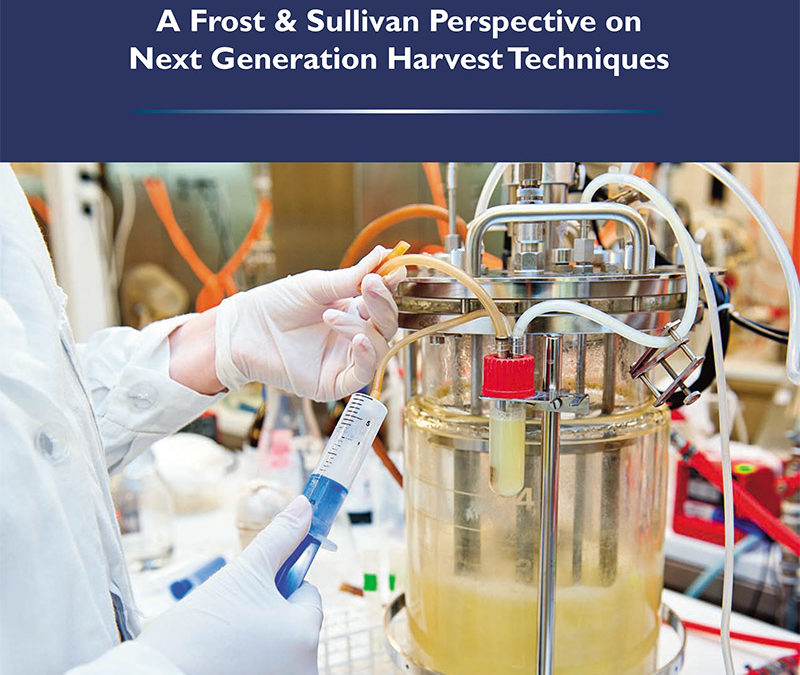A Frost & Sullivan Perspective on Next Generation Harvest Techniques

Key Trends Reshaping The Future of Bio-pharmaceutical Harvest & Clarification
August 2, 2022
Powering clients to a future shaped by growth
August 9, 2022Challenges in Harvesting Necessitate New Technologies
The class of monoclonal antibody (mAb) therapeutics has grown considerably in the last two decades and now makes up a significant portion of the biotherapeutics market. With more than 70 monoclonal antibody drugs on the market, and 33 of those drugs launched between 2014 and 2017, pharmaceutical manufacturing operations continue to adjust to the new demand, particularly around the processes of harvest, clarification, and purification of mAbs.
Briefly, the primary goals for harvest and clarification operations are to remove cells and cell debris from mammalian cell culture, and further purify and clarify the resulting product in order to capture the mAbs via chromatography downstream. Traditionally, various technologies are used for these processes, such as centrifugation, microfiltration, depth filtration, and flocculants. However, new cell culture techniques, increased demand for monoclonal therapeutics, and a convergence of other factors in biopharmaceutical manufacturing has prompted the need for novel harvest and clarification techniques and technologies to increase the efficiency of the upstream and downstream processes for mAb production.
Several challenges in current harvest operations are necessitating changes in techniques and technologies. Newer techniques in mammalian cell culture, a result of increased demand for mAb therapeutics, have impacted the conditions for cell harvesting. Xiaoyang Zhang, Principal Scientist at Amgen, described that “One of the trends in cell culture, perfusion cell culture, means the process is smaller scale and continuous, but it also means very, very high cell density.” A recent publication by MedImmune announced that the company was able to culture a very high density 120 million cells per mL, which posed a huge challenge to conventional harvest technology. Echoing this, Nripen Singh, Associate Director, MS&T Downstream at Bristol Myers Squibb, described the push to move away from conventional centrifugation given its ineffectiveness with increasing cell biomass, high cell densities, and high titres stemming from these new cell culture processes.
Download eBook




